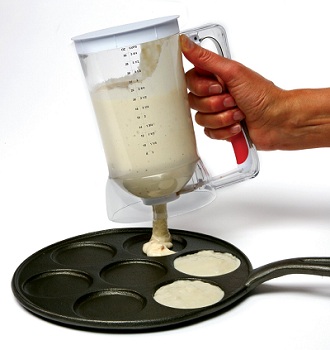
Many baking recipes call for frozen fruit instead of fresh fruit in recipes from muffins to pies. This is because frozen fruit is readily available regardless of season, it is consistent and easy to use. With an increased focus on seasonality, however, many bakers prefer to use fresh, in-season fruits over frozen, both to make good use of the ingredients they can find at their local markets and to highlight exceptionally delicious fruits when they are at their peak.
Both fresh and frozen fruits make great additions to baked goods, and many recipes out there can be made with either fresh or frozen products. Commercially frozen fruit is flash frozen at a very low temperature, a process that helps to preserve the texture of the fruit after defrosting. Frozen fruit will still not have the same firm texture as fresh when it is defrosted, but it will have just about the same texture after baking. Frozen fruits are not typically defrosted before being stirred into a batter or even cooked down into a sauce. Fruit only very occasionally needs to be defrosted before being incorporated into a recipe and a recipe will always state when this is necessary. When substituting fresh fruit for frozen fruit – fresh blueberries, for instance, in place of frozen blueberries – you will need to be more careful about incorporating the berries so that the tender, fresh berries don’t get smashed as you mix them in. Your baking time also may need to be reduced slightly, as frozen fruit lowers the temperature of cake batters and pie fillings, which can result in a longer baking time.
In recipes that call for fresh fruit to be stirred into the batter or used as a filling, you can usually substitute the same amount of frozen fruit that has not be defrosted without any problems. The baking time may need to be extended slightly when using frozen fruit in a recipe, and when frozen fruit is used in a filling, you may need a little extra thickener because frozen fruit can release more liquid than fresh (usually from water/ice crystals that collect in the bags). In some recipes, it is not recommended to substitute frozen fruit. Recipes will generally indicate when this is the case, and it is usually because they want the fruit to have a specific texture after baking or because a recipe has a very specific baking time and a few degrees may thrown things off. For instance, many baked fruit tarts really require fresh fruit to get a good result.
Overall, frozen fruit is something you can always count on and always have on hand so you can bake your favorite treats year round. But it is worth noting that fresh fruit can always be a good choice when it comes to baking, even if you have to treat it a little more carefully to incorporate it into your batter or dough while you work with it, and it is worth opting for fresh fruit when it is at is peak.






Pop Chef
July 9, 2013Good post. Fresh fruits may still be the best to use but frozen fruits are a lot easier to find. Thanks for sharing.
Olga's Flavor Factory
July 23, 2013Frozen fruits are always great especially when they aren’t in season. Food preservation was made that way, so it won’t hurt to use them if done properly in the recipe.
phyllus lattimer
August 18, 2017How much thickened is recommended if using frozen fruit in cobblers? I personally prefer tapioca .
Nicole
August 29, 2017Hi there, In fruit cobblers, where having a bit of excess liquid doesn’t matter much (since they’re usually served with a spoon and are quite juicy anyway), you may not need to add any additional thickener over what the recipe recommends when using frozen fruit. That said, frozen fruit will often result in more liquid in a cobbler, so you can increase the thickener – flour, cornstarch, tapioca, etc – slightly for a thicker filling. I hope that helps!